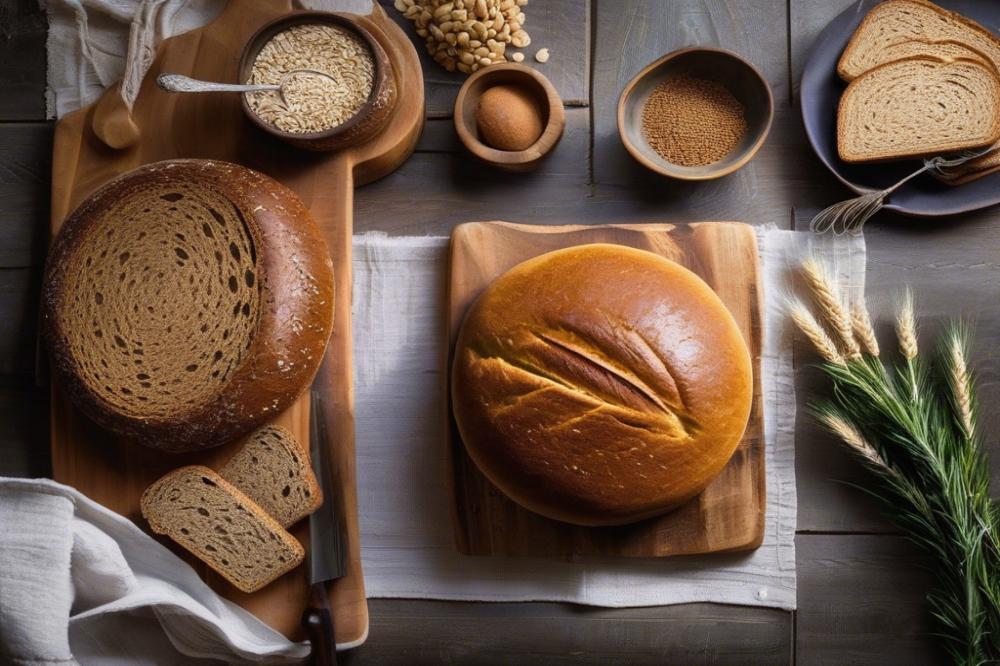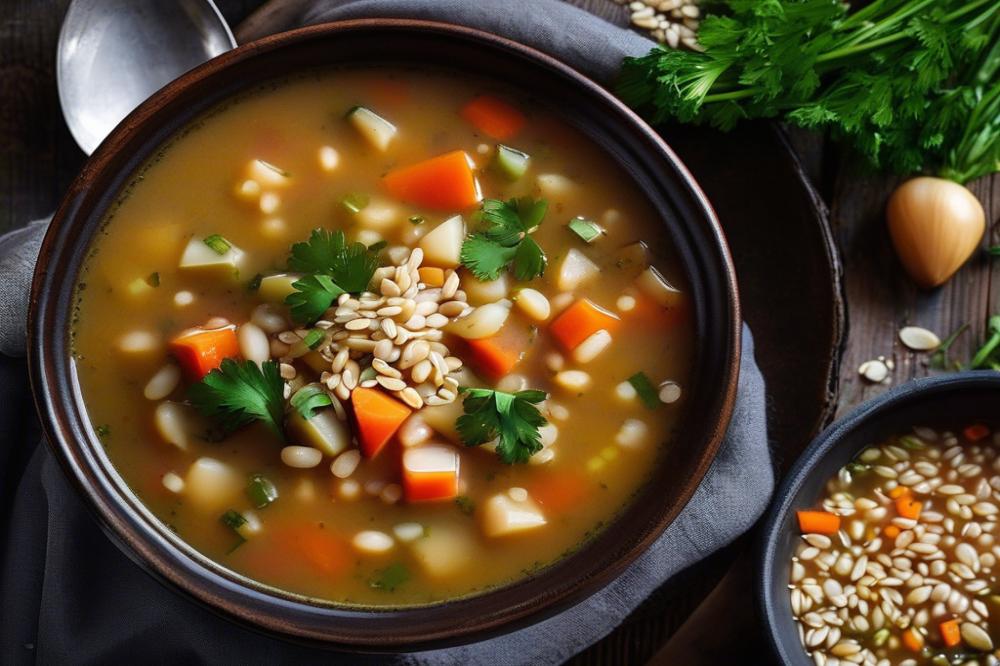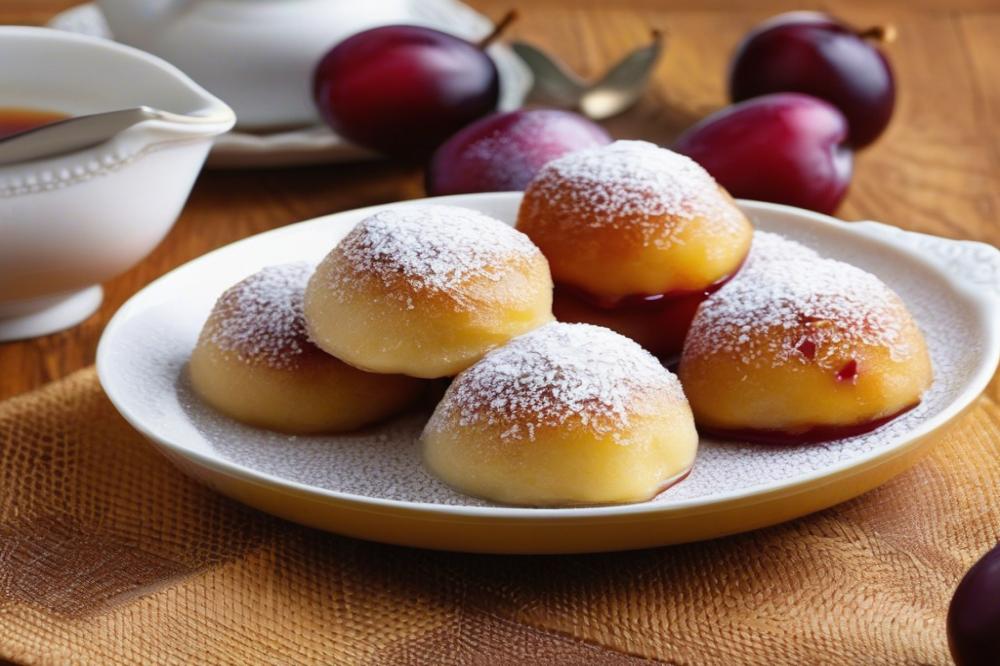Introduction
Polish Rye Bread holds a cherished place in Polish cuisine. It is not just an ordinary loaf; it’s a symbol of tradition and culture. Many people have fond memories associated with eating this hearty bread. Chleb Żytni is the classic version of this beloved staple, renowned for its dense texture and rich flavor. The artisan approach to making this type of bread makes it appealing to many who wish to recreate the experience of their homeland.
Making homemade bread can be deeply rewarding. The process offers a sense of accomplishment and connects bakers to age-old traditions. With a rye bread recipe like this, you craft something nourishing. This bread is not just tasty; it also packs a nutritious punch. Whole grain rye contributes dietary fiber, vitamins, and minerals. Thus, it’s an excellent option for a healthy diet.
In this recipe, traditional baking techniques come to life. Sourdough methods bring out deep flavors, while yeast helps the bread rise beautifully. By crafting your own loaf, you control the ingredients, ensuring freshness and quality. The aroma of fresh bread in your home is something truly special. Once you taste a slice of homemade Chleb Żytni, you may never want to go back to store-bought bread!
The Art of Polish Rye Bread
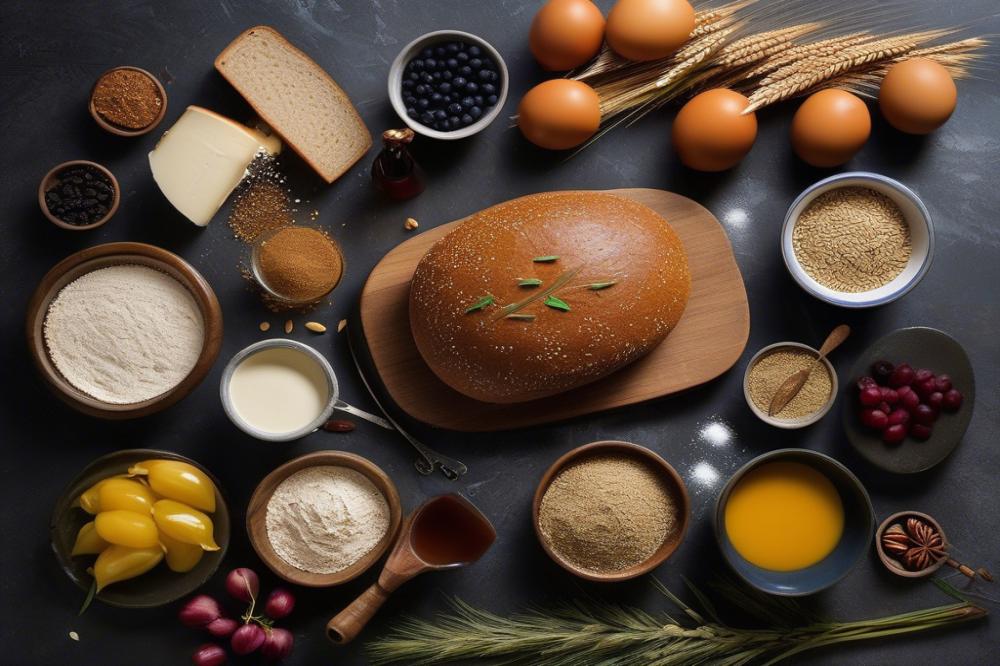
Polish rye bread is a staple in many households. It offers a hearty flavor that is hard to replicate. This traditional Polish bread is made mostly from whole grain rye flour. The process of creating it involves more than just mixing ingredients. It requires patience, love, and skill.
Making sourdough is an art form in Poland. Many families have their own recipes passed down through generations. This method allows for the natural fermentation of the dough. In contrast, yeast bread employs quicker techniques, but both provide wonderful flavors. Each type has its own charm and purpose in Polish cuisine.
Baking techniques play a crucial role in attaining the right texture. The crust of a well-made loaf should be crisp, while the inside remains soft and moist. Artisanal bread makers pay great attention to detail. They often use traditional stone ovens that can enhance the bread’s character. This commitment to quality often results in healthier bread options that are free from artificial additives.
For many Polish families, homemade bread is more than just food; it connects them to their heritage. Sharing rye bread at the table fosters a sense of community. It invites stories, laughter, and shared history. Recipes may vary, but the spirit of togetherness remains constant. As people continue to cherish these baking traditions, the art of Polish rye bread lives on. It is a delicious reminder of culture, comfort, and timeless culinary practices.
Ingredients for Chleb Żytni
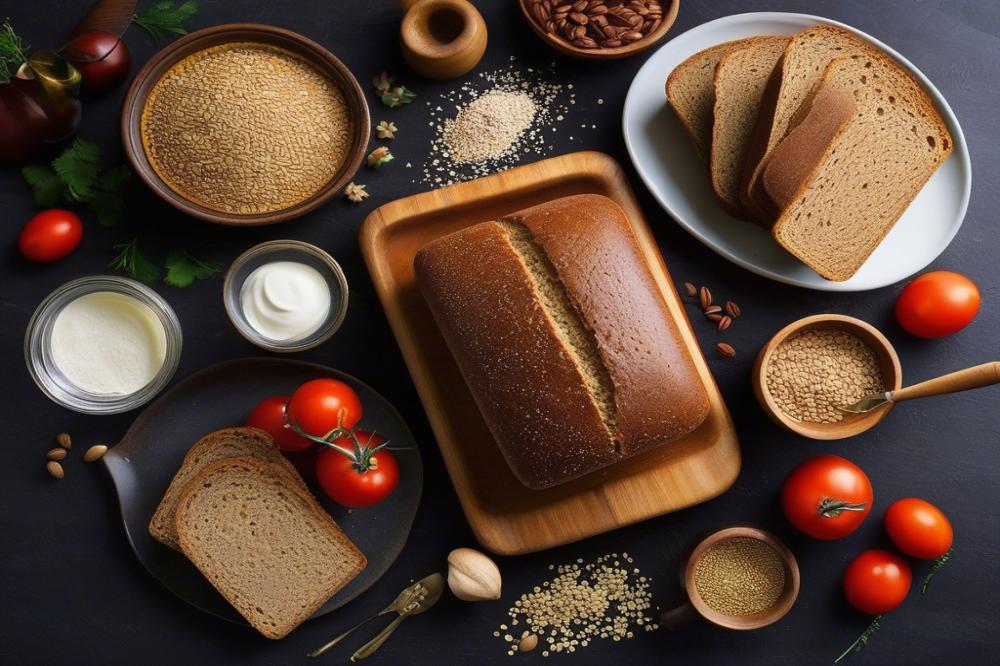
To create a delightful loaf of traditional Polish bread, you will need specific ingredients. Here’s the list along with their quantities for a perfect rye bread recipe:
- 500g whole grain rye flour
- 300ml warm water
- 100g sourdough starter
- 10g salt
- 5g caraway seeds (optional)
- 5g sugar (optional)
Nutritional Information
Understanding the nutrients in your ingredients can enhance your baking process and promote healthy bread choices. Here’s the nutritional breakdown for each component:
- Whole grain rye flour (500g): Approximately 1700 calories, 350g carbs, 55g protein, 7g fat, 45g fiber. This flour is rich in nutrients and offers essential dietary fiber.
- Warm water (300ml): Contains zero calories, carbohydrates, proteins, or fats. It simply aids in blending the ingredients and activating the process of fermentation.
- Sourdough starter (100g): Around 100 calories, 20g carbs, 2g protein, 0g fat, 1g fiber. This ingredient brings that unique flavor while introducing natural fermentation.
- Salt (10g): About 0 calories, 0g carbs, 0g protein, 0g fat. Salt enhances flavor but moderation is key. It also helps with the baking techniques.
- Caraway seeds (5g, optional): Roughly 20 calories, 4g carbs, 1g protein, 1g fat, 2g fiber. These seeds add an aromatic touch that many prefer in their artisanal bread.
- Sugar (5g, optional): Approximately 20 calories, 5g carbs, 0g protein, 0g fat. A little sweetness can balance flavors in your rye bread.
Every ingredient plays a role in achieving a soft, flavorful loaf. Whole grain rye flour forms the base, providing earthy flavors and unique textures. Sourdough starter gives it life, encouraging that delightful rise. Caraway seeds introduce warmth, making each bite memorable. This wholesome combination supports your journey into Polish cuisine. Embrace these elements to create homemade bread that families will cherish.
Step-by-Step Instructions
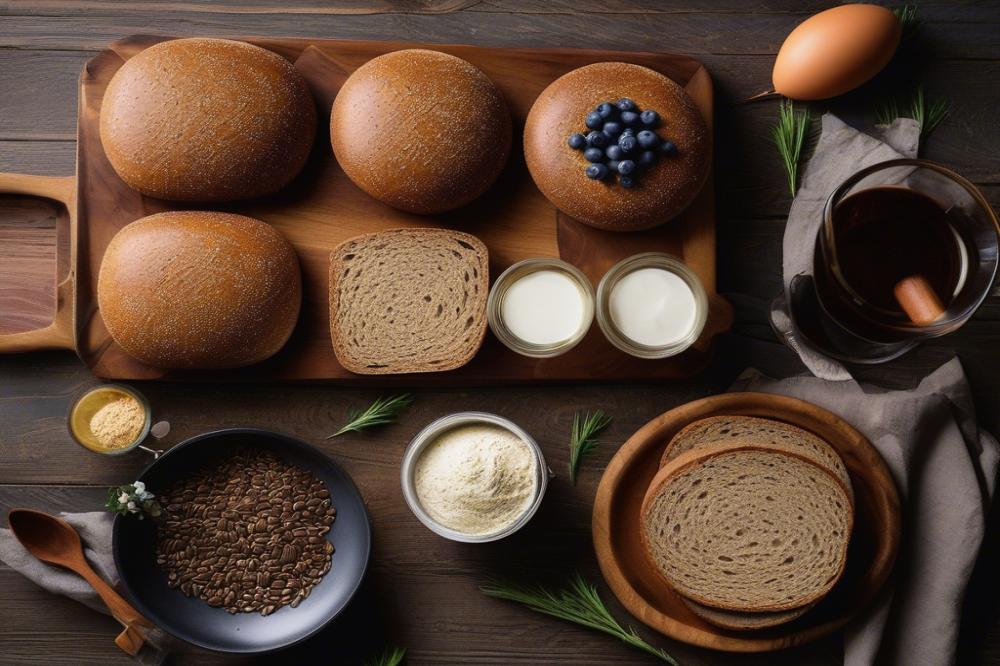
Preparing the Sourdough Starter
Start with a healthy sourdough starter. Combine equal parts flour and water in a bowl. Whole grain flour works best for a rich flavor. Let it sit for several hours at room temperature. You want it bubbly and active before using. This will give your rye bread its unique sour flavor.
Mixing Ingredients
Gather your main ingredients next. Use rye flour as the base; it’s essential for authenticity. Add water and your sourdough starter to a large mixing bowl. Include a touch of salt to enhance flavor. Mix until you have a sticky dough. This dough is what makes traditional Polish bread special.
Kneading and Fermenting
Knead the dough for about ten minutes. Use a well-floured surface to prevent sticking. This step builds gluten, which is important for the bread’s structure. After kneading, place the dough in a clean bowl. Cover it with a damp cloth and let it ferment for several hours. The key is patience; the longer it ferments, the more flavor it develops.
Shaping the Dough
Once the dough has doubled in size, it’s time to shape it. Gently punch it down to release gas. Turn it out onto a floured surface. Shape it into a round or oval loaf. A smooth top will create a beautiful crust later. Place it seam-side down in a prepared basket or on a baking sheet.
Final Proofing
Cover the dough again with a damp cloth. Allow it to proof for about one to two hours. This step is crucial for achieving a light texture. You want the dough to puff up nicely. Keep it in a warm spot, away from drafts.
Baking Techniques for Achieving the Perfect Crust
Preheat your oven to 450°F (232°C) while the dough is proofing. Place a baking stone or a cast iron pan inside to heat up. Scoring the top with a sharp knife helps control the rise. This also creates an attractive design. When ready, carefully transfer the loaf into the oven. Steam is key here, so add a cup of hot water to the preheated pan to create a steamy environment. This will result in a crusty exterior.
Cooling and Storing the Bread
Baking lasts about 30-40 minutes, but watch closely for color. The bread should sound hollow when tapped on the bottom. Once done, remove it from the oven and let it cool completely on a wire rack. This prevents moisture from building up. Storing it in a cloth bag keeps the bread fresh longer. Enjoy your homemade bread spread with butter or topped with your favorite ingredients.
Health Benefits of Polish Rye Bread
This traditional Polish bread offers numerous health benefits. Rye is a whole grain, rich in fiber, which supports digestion and gut health. While many people enjoy white bread, that option lacks significant nutrients. Whole grain rye, in contrast, is packed with vitamins and minerals. It’s particularly beneficial for those seeking a healthier diet.
Research consistently shows that consuming whole grains can reduce the risk of chronic diseases. Rye bread is known to have a lower glycemic index compared to regular wheat breads. This means it can help maintain stable blood sugar levels. That’s a significant advantage for those managing diabetes or weight. Moreover, the fiber in whole grains helps you feel fuller for longer, which can aid in weight management.
Many people embrace homemade bread for its superior nutritional quality. When you use a rye bread recipe, you can control the ingredients. You can choose natural sources for your starter if you go the sourdough route. By utilizing artisanal baking techniques, you craft loaves that are both delicious and nutritious. In addition, homemade bread is often free from the preservatives found in commercially-produced yeast bread.
Incorporating rye into your meals is a great way to enhance your diet. Polish cuisine features many dishes that pair wonderfully with this hearty bread. Enjoying a slice with soup or as part of a sandwich can elevate any meal. Additionally, it’s a wonderful vehicle for healthy toppings like avocado or lean proteins.
Switching to rye bread can also contribute to better heart health. Whole grain options like this one are linked to lower cholesterol levels. Eating high-fiber foods supports cardiovascular function by promoting better circulation. Choosing healthy bread options is a small step that can have lasting impacts on your overall health.
Serving Suggestions and Pairings
When enjoying homemade Polish rye bread, think about delectable toppings that compliment its rich flavor. A classic choice is butter. Spread a generous layer on a warm slice for a simple yet satisfying treat. Traditional Polish cuisine often uses lard or smalec, seasoned with herbs and served with pickles. This combination adds a robust taste that pairs beautifully with the hearty character of the bread.
Cheese lovers will delight in trying aged cheeses such as smoked oscypek. This Polish sheep cheese adds a smoky touch and pairs well with the sour notes of the rye. Alternatively, go for cream cheese blended with fresh herbs. It provides a fresh contrast to the dense texture of the bread.
For those who enjoy a touch of sweetness, consider adding honey or jam. A dollop of homemade berry preserves on a slice creates a pleasant balance. Rye bread also holds up well under toppings like eggs or avocados. Toasted slices topped with a perfectly poached egg make for an excellent brunch option.
Creative ways to use rye bread may include incorporating it into savory meals. Consider crafting a hearty sandwich. Use layers of roasted vegetables, smoked turkey, or grilled cheese. Such fillings enhance the depth of flavor while adding variety to your lunch or dinner.
Another idea lies in making croutons. Cut your leftover rye bread into cubes, toss them with olive oil, seasoning, and bake until crisp. Use these to elevate a salad or soup, adding texture and taste.
Fermentation techniques are also worth exploring. Transform rye bread into a base for bruschetta. Top with tomatoes, garlic, and basil for a simple appetizer. Serving suggestions for Polish rye bread are limited only by your imagination. Using these ideas, you can savor this healthy bread in numerous ways, whether it’s a part of breakfast, lunch, or dinner.
Final Thoughts on Chleb Żytni
Polish rye bread holds a place of honor in traditional Polish cuisine. This hearty loaf has been a staple for generations, loved for its flavor and nutritional benefits. When you sit down with a slice of freshly baked Chleb Żytni, you’re not just enjoying a meal. You’re partaking in a rich cultural history that connects many people to their roots.
Trying your hand at a rye bread recipe can be both fun and satisfying. Baking at home allows you to experience the whole process, from mixing the ingredients to the delightful aroma that fills your kitchen. The reward of pulling a warm, crusty loaf out of the oven is hard to beat. Each bite offers a taste of tradition and a sense of accomplishment. You may even find that it brings families together, as everyone gathers to enjoy a homemade treat.
Furthermore, the value of consuming homemade artisanal bread cannot be overstated. It’s healthier than store-bought options, often free from preservatives and artificial ingredients. Making bread from scratch lets you control what goes into it. Imagine sharing a slice with friends or family. They’ll appreciate the time and care you put into every loaf.
In conclusion, making Chleb Żytni is not just about baking. It’s about embracing a time-honored tradition that nourishes both the body and spirit. So roll up your sleeves, gather your ingredients, and dive into this rewarding baking experience. You might just discover a new passion and a delightful addition to your meals.

